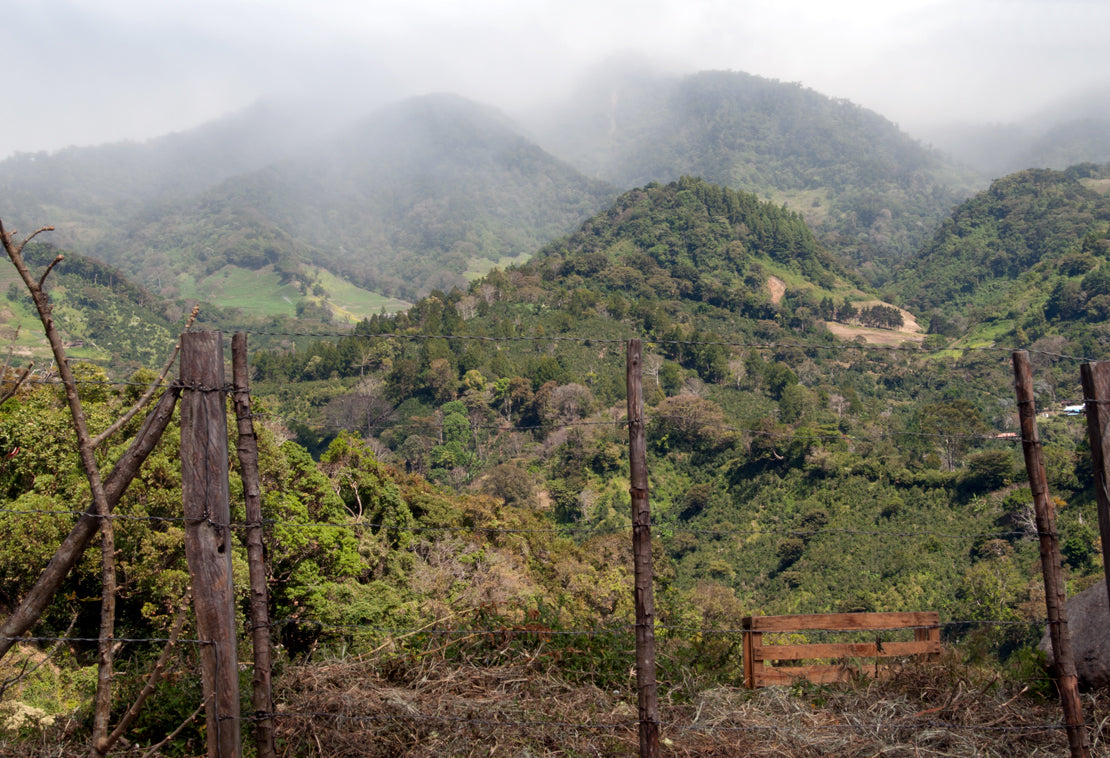

Panama
Panama is a sliver of land connecting two continents, where one can view both the Atlantic and Pacific Oceans. Panama runs east, from Costa Rica, to west, with a center of mountains that take a rest at the Panama Canal and then resumes before trailing off into Colombia.
All of Panama’s small coffee production takes place on the Pacific side of the mountain chain near Costa Rica, to the west. Its most prized coffees are grown on the western and eastern sides (facing the Pacific) of the dominant 11,000 foot high Volcan Baru where coffee is grown at elevations of 3,500 feet to nearly 6,000 feet.

While the coffee regions have a lengthy dry season, stretching from December to May, rainfall is very plentiful, with yearly averages of 125 to over 150 inches. Certain slopes on the western side of Volcan Baru, above the charming town of Boquete (pronounced Bo-keh’-tay), have a continuous precipitation in the form of mist even during the dry season.

Growing conditions can be difficult, with cold winds during the dry season sweeping down from the Atlantic Ocean to the north over the mountain chain and then descending through the coffee fields on the Pacific side, often drying and stripping the leaves of many coffee trees. During the long wet season the rains likewise come from the Atlantic to drop their moisture on the Pacific coffee-growing side, as illustrated by the adjoining photo showing the Valley of Boquete with coffee slopes above. The extreme wet conditions on these slopes can make fungal outbreaks on the coffee plants a real problem.

Despite these difficult growing conditions Panama has continuously produced highly esteemed coffees with classic sweetness and proportion. In the 1990’s some of its lower grown coffees were substituted for Hawaiian Kona to which they bore an extreme resemblance in looks and in flavor profile, and sold to many duped US roasters, resulting in federal prosecution of its “importer.”
Panama has held annual coffee competitions since the late 1990’s. In 2004 the first prize winner leaped into the imaginations and cupping labs throughout the gourmet coffee world. Price and his son Daniel Peterson had offered a lot of a little-known, very rare coffee variety called Gesha, separated from other varieties for the first time, grown on a very high altitude small corner of their La Esmeralda Farm. It was unlike any other coffee in the Americas, pronouncedly so! Today a number of Panamanian farms offer this variety, with La Esmeralda leading the way in every competition since (2007). It has put tiny Panama into the center of the gourmet coffee map, offering a multiplicity of flavor profiles from its many microclimates and diverse Arabica varieties found nowhere else, so far, in the western hemisphere.






